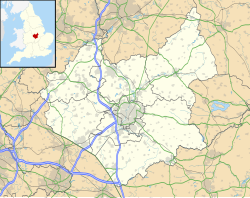Collections
Amongst the items on display are various possessions of Daniel Lambert, an 18th-century resident of Leicester who weighed over 50 stone (320 kg) and became famous in his lifetime as Britain's largest man, and remains one of the city's famous icons. Possessions on display include items of clothing and his chair. [3]
The museum also houses a 1950s Leicester street scene modelled in Wharf Street with a number of model shops, as well as an exhibition of toys from Tudor times to the present. [1]
Other collections relate to Leicester's industrial and hosiery industry, such as Corah's and Wolsey, major clothing firms in Leicester. The museum has an exhibit with a particular focus on the more recent history of Leicester, from the 19th century onward.
During the period 2014 to 2018 it held a rolling series of exhibitions marking the centenary of the First World War entitled 'Leicester Remembers'. [4] The museum also includes a display about the Royal Leicestershire Regiment, such as drums used by the regiment band, and a tiger, the mascot of the regiment. [5] The museum houses a large collection of items relating to life during the wars. These cover aspects of the front-line and home front. The museum holds a large collection of medals, with records regarding the involvement of people within the Leicester Regiment, which can be accessed via a computer. A model trench sits on the first floor. Other items include a Morrison Shelter and gas masks to reflect the Home Front during the Second World War.
This page is based on this
Wikipedia article Text is available under the
CC BY-SA 4.0 license; additional terms may apply.
Images, videos and audio are available under their respective licenses.






